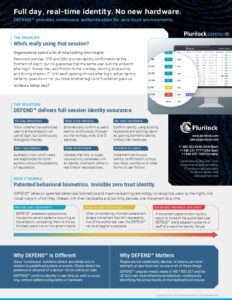In the ever-evolving landscape of cybersecurity, the detection and prevention of cyber threats have become paramount. Among the myriad of tools and methodologies employed by cybersecurity professionals, one key concept plays a crucial role – Indicators of Compromise (IoC). This deep dive explores what IoCs are, why they matter, and delves into an in-depth analysis of their importance in fortifying digital defenses.
Understanding Indicators of Compromise
Definition and Types
Indicators of Compromise refer to artifacts or observable activities that suggest an unauthorized access or a security breach in a system. These indicators can take various forms, ranging from malicious files, network traffic patterns, to unusual user behaviors. IoCs help cybersecurity professionals identify, respond to, and mitigate security incidents swiftly.
There are several types of IoCs, broadly categorized into four main groups:
- Hash-based IoCs: These involve the use of cryptographic hash functions to generate a fixed-size string of characters (hash) from a file. Any change to the file results in a completely different hash. Security practitioners can compare file hashes to known malicious hashes, enabling the identification of compromised files.
- Signature-based IoCs: These involve the creation and use of signatures, which are unique patterns or characteristics of known malware. Security systems can use these signatures to identify and block malicious code.
- Behavior-based IoCs: These focus on identifying unusual or suspicious behavior within a network. Deviations from normal patterns, such as unexpected data transfers or abnormal user activity, can indicate a compromise.
- Artifact-based IoCs: These encompass any artifacts left by an attacker, such as log entries, registry changes, or abnormal system configurations. Analyzing these artifacts provides insights into the methods used by adversaries.
IoCs in Action
Imagine a scenario where an organization’s network has been infiltrated. The security team, armed with IoCs, can swiftly identify the compromise and take remedial actions.
- Malicious File Detection: An employee unknowingly downloads a malware-laden file. By comparing the file’s hash with known malicious hashes, the security system flags the file as a potential threat, triggering an alert.
- Signature Matching: A new strain of ransomware is unleashed. The security system, equipped with signatures of known ransomware variants, identifies the attack based on the unique patterns in the malicious code and blocks it before it can execute.
- Behavioral Anomalies: A user’s account credentials are compromised, leading to unauthorized access. IoCs that focus on abnormal user behavior, such as accessing unusual resources or transferring large amounts of data, raise alarms, enabling a swift response to the security incident.
- Artifact Analysis: In the aftermath of an attack, security analysts examine logs and registry entries. Unusual system modifications, unexpected network connections, or changes in file permissions become IoCs that aid in understanding the attack vector and strengthening defenses against similar threats in the future.
Why IoCs Matter
Early Detection and Response
The primary objective of IoCs is to enable early detection and swift response to security incidents. Cyberattacks can have severe consequences, ranging from data breaches to financial losses and reputational damage. IoCs act as the first line of defense, providing organizations with the means to identify and mitigate threats before they escalate.
Continuous Improvement of Cybersecurity Posture
IoCs are instrumental in refining and enhancing an organization’s cybersecurity posture. By analyzing the indicators associated with past incidents, security teams gain insights into the tactics, techniques, and procedures (TTPs) employed by adversaries. This knowledge informs the development of proactive measures to thwart future attacks.
Collaboration and Threat Intelligence Sharing
In the interconnected world of cybersecurity, collaboration is key. IoCs facilitate the sharing of threat intelligence among organizations, security vendors, and government agencies. When a new threat is identified, the associated IoCs can be disseminated to the broader cybersecurity community, enabling a collective defense against emerging threats.
Compliance and Reporting
IoCs play a vital role in meeting regulatory compliance requirements. Many industries and regions have specific cybersecurity regulations that mandate organizations to implement measures for threat detection and response. IoCs provide a tangible way to demonstrate compliance by showcasing an organization’s ability to identify and address security incidents.
Cost Savings and Resource Efficiency
Swift detection and response to security incidents can translate to significant cost savings. The longer an attacker remains undetected, the more damage they can inflict. IoCs help organizations optimize their resources by automating the detection process and allowing security teams to focus on strategic threat intelligence analysis and incident response.
In-Depth Analysis of IoC Importance
Attribution and Threat Actor Identification
IoCs are instrumental in attributing cyber incidents to specific threat actors or groups. By examining the indicators left behind in an attack, cybersecurity professionals can piece together a profile of the adversary. This information is crucial for understanding the motives, capabilities, and tactics employed by different threat actors, aiding in the development of targeted defense strategies.
Contextual Understanding of Threats
IoCs provide a context-rich understanding of cyber threats. Rather than viewing incidents in isolation, security teams can analyze IoCs to discern patterns and trends. This contextual awareness helps organizations anticipate evolving threat landscapes and proactively fortify their defenses against emerging attack vectors.
Incident Response and Mitigation
When a security incident occurs, time is of the essence. IoCs play a pivotal role in incident response, allowing security teams to quickly identify compromised systems, isolate affected areas, and remediate the impact. This swift response not only minimizes damage but also prevents the lateral movement of attackers within the network.
Integration with Security Information and Event Management (SIEM) Systems
IoCs seamlessly integrate with SIEM systems, enhancing their capabilities in threat detection and analysis. SIEM platforms aggregate and correlate data from various sources, and IoCs provide the specific indicators that SIEM systems use to identify potential security incidents. This integration streamlines the detection process, enabling organizations to make sense of vast amounts of data and prioritize alerts effectively.
Proactive Threat Hunting
IoCs empower cybersecurity professionals with the ability to proactively hunt for threats within their environments. Instead of relying solely on automated systems, threat hunters leverage IoCs to search for signs of compromise that may have evaded automated detection. This proactive approach is crucial in identifying sophisticated threats that exhibit low or no detectable patterns.
Evolving Threat Landscape
The cybersecurity landscape is dynamic, with threat actors constantly evolving their tactics to bypass traditional security measures. IoCs provide a dynamic and adaptive defense mechanism, allowing organizations to stay ahead of the curve. Regularly updating and refining IoCs based on threat intelligence ensures that security measures remain effective against the latest cyber threats.
Privacy Concerns and Ethical Considerations
While IoCs are invaluable in enhancing cybersecurity, they also raise privacy concerns. The collection and analysis of indicators often involve monitoring user activities, potentially infringing on individual privacy. Striking a balance between effective threat detection and respecting privacy rights is a critical ethical consideration for organizations implementing IoCs.
Conclusion
Indicators of Compromise are a cornerstone of modern cybersecurity, offering a proactive and dynamic defense against a myriad of cyber threats. Their importance extends beyond mere detection; IoCs empower organizations to understand, respond to, and learn from security incidents. As cyber threats continue to evolve, the continuous refinement and utilization of IoCs will be essential in fortifying digital defenses and maintaining a resilient cybersecurity posture. Organizations that embrace the power of IoCs not only enhance their ability to combat cyber threats but also contribute to the collective strength of the global cybersecurity community.













